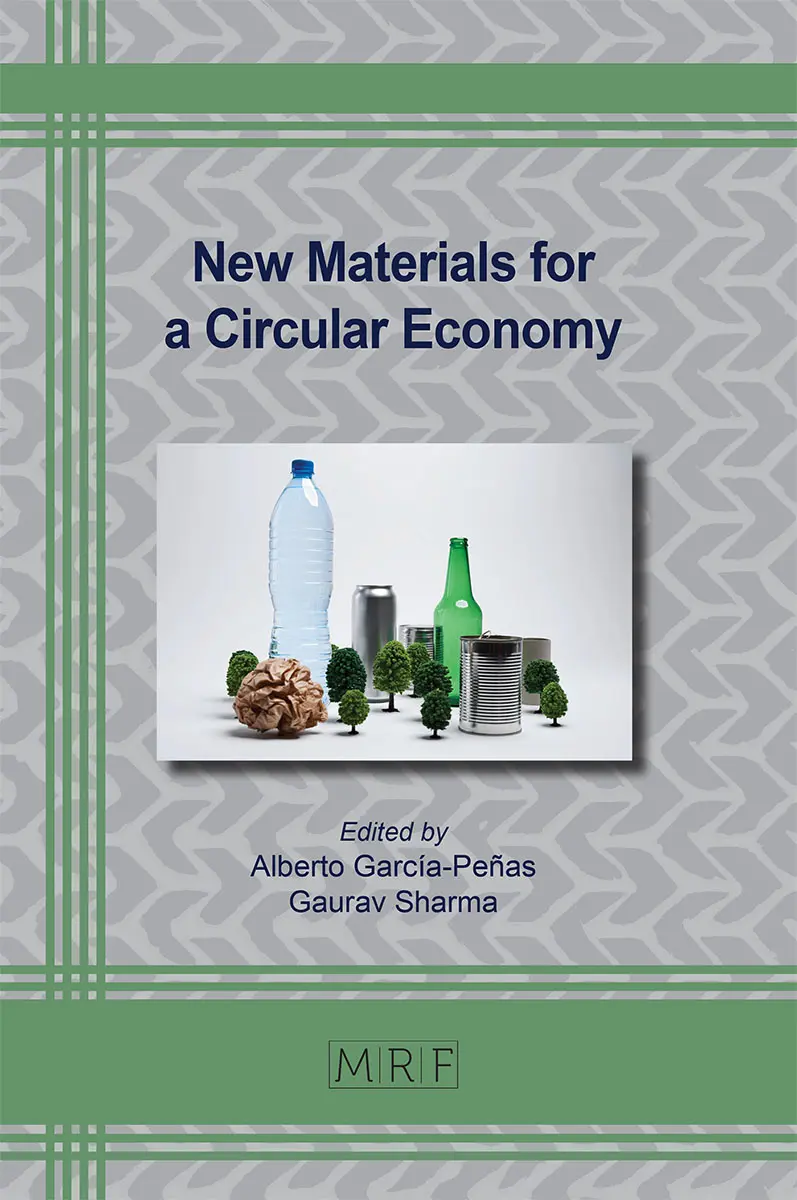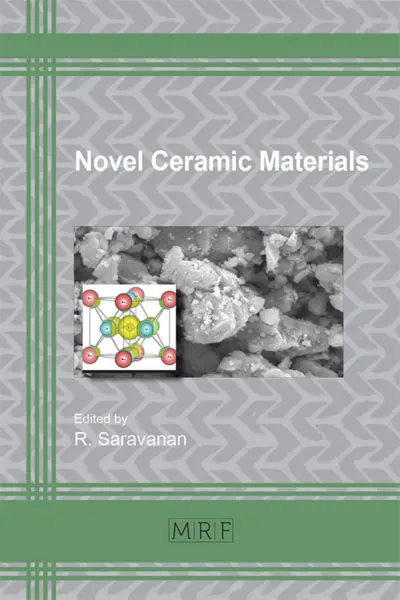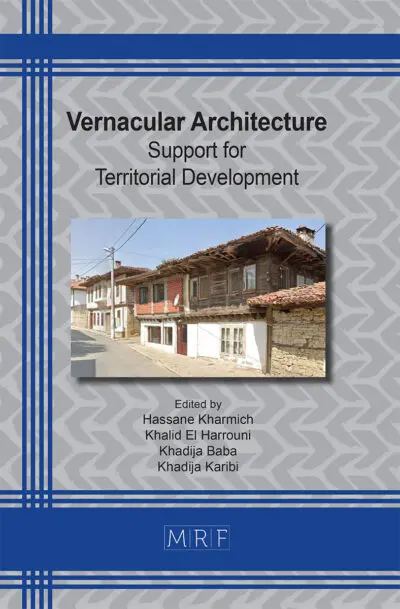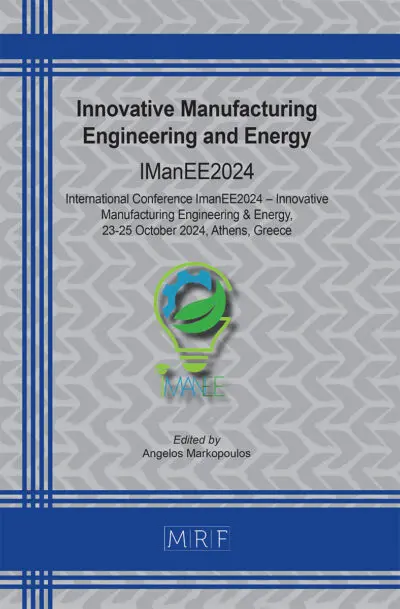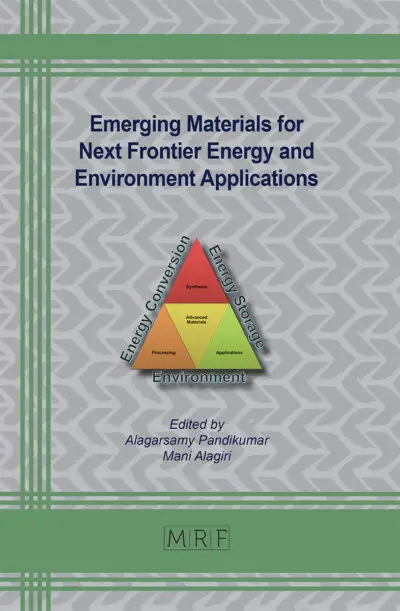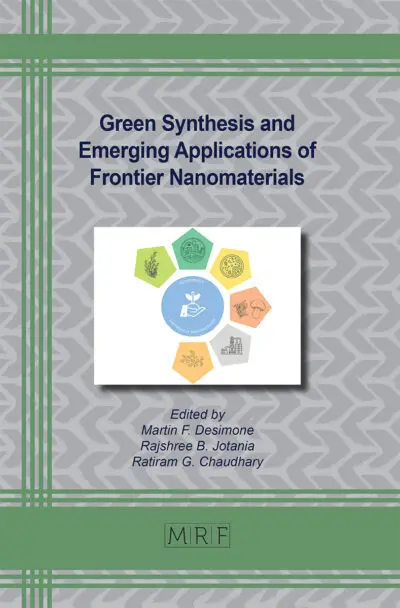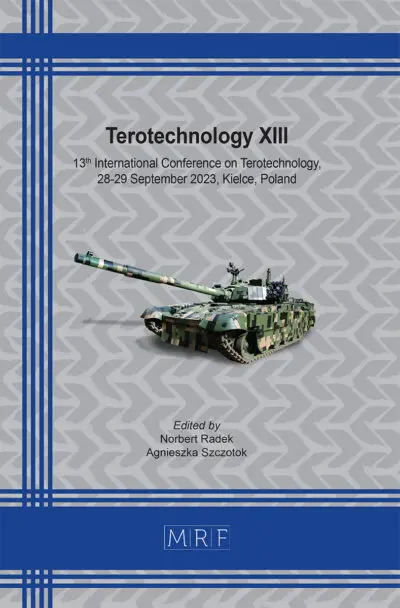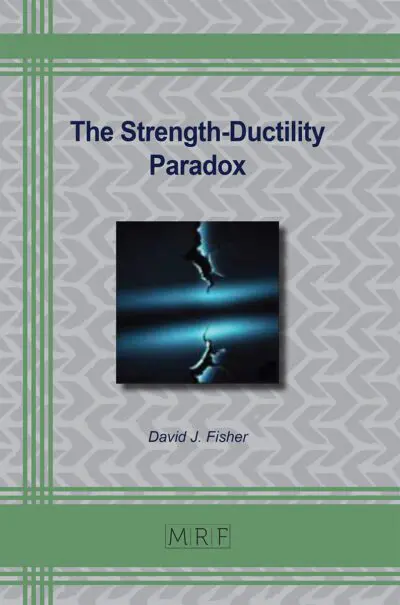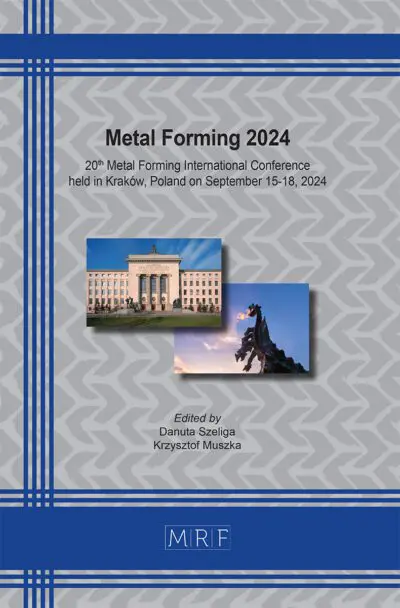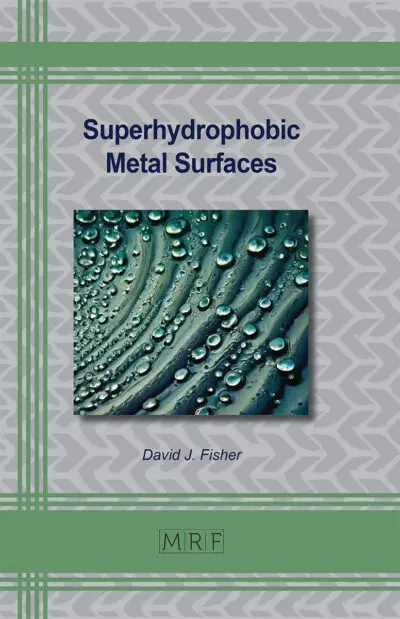Lignocellulosic resources: A Key Player in the Transition to a Circular Bioeconomy
E. Espinosa, E. Rincón, L.M. Reyes Mendez, R. Morcillo-Martín, L. Rabasco-Vílchez, J. Moreno-García, J. de Haro, A. Lucena, A. Rodríguez
The trend towards sustainable development and the twin goals of reducing the carbon footprint using natural resources have put lignocellulosic residues in the spotlight as a feedstock for the development of biorefinery systems. These facts are compounded by the massive increase in the production of waste derived from the food supply chain, both agricultural and agri-food residues. Biorefineries are sustainable processing systems, encompassing a network of different processes and equipment, for the fractionation of biomass main components. These main fractions are then used to obtain new materials and high-added value products such as fuels and chemicals. This chapter presents the main industrial uses of agricultural and agri-food residues as part of the biorefinery. These industrial applications range from the most classical and widely studied, such as the papermaking industry and the production of fine chemicals, to the most novel applications in the food industry, the development of composite materials, clinical applications and for energy production, etc.
Keywords
Biorefinery, Lignocellulosic Residues, Circular Bioeconomy, Valorization, Bioproducts
Published online 8/10/2023, 53 pages
Citation: E. Espinosa, E. Rincón, L.M. Reyes Mendez, R. Morcillo-Martín, L. Rabasco-Vílchez, J. Moreno-García, J. de Haro, A. Lucena, A. Rodríguez, Lignocellulosic resources: A Key Player in the Transition to a Circular Bioeconomy, Materials Research Foundations, Vol. 149, pp 393-445, 2023
DOI: https://doi.org/10.21741/9781644902639-11
Part of the book on New Materials for a Circular Economy
References
[1] Food and Agriculture Organization of the United Nations (FAO), FAOSTAT, Crops and Livestock Products. (2022).
[2] E. Espinosa, R.I. Arrebola, I. Bascón-Villegas, M. Sánchez-Gutiérrez, J. Domínguez-Robles, A. Rodríguez, Industrial application of orange tree nanocellulose as papermaking reinforcement agent, Cellulose. 27 (2020) 10781–10797. https://doi.org/10.1007/s10570-020-03353-w
[3] M. Kissinger, J. Fix, W.E. Rees, Wood and non-wood pulp production: Comparative ecological footprinting on the Canadian prairies, Ecological Economics. 62 (2007) 552–558. https://doi.org/10.1016/j.ecolecon.2006.07.019
[4] P. Rousu, P. Rousu, J. Anttila, Sustainable pulp production from agricultural waste, Resour Conserv Recycl. 35 (2002) 85–103. https://doi.org/10.1016/S0921-3449(01)00124-0
[5] E.S. Abd El-Sayed, M. El-Sakhawy, M.A.-M. El-Sakhawy, Non-wood fibers as raw material for pulp and paper industry, Nord Pulp Paper Res J. 35 (2020) 215–230. https://doi.org/10.1515/npprj-2019-0064
[6] J. Garcia, Pastas celulósicas de materias primas alternativas a las convencionales, in: Caracterización Morfológica de Las Materias Primas, Editorial Gráficas Sol, S.A., 2005: pp. 71–95
[7] Z. Jahan, M.B.K. Niazi, M.B. Hägg, Ø.W. Gregersen, Decoupling the effect of membrane thickness and CNC concentration in PVA based nanocomposite membranes for CO2/CH4 separation, Sep Purif Technol. 204 (2018) 220–225. https://doi.org/10.1016/J.SEPPUR.2018.04.076
[8] F. Vargas, Z. González, R. Sánchez, L. Jiménez, A. Rodríguez, Cellulosic pulps of cereal straws as raw material for the manufacture of ecological packaging, Bioresources. 7 (2012) 4161–4170
[9] L. Jiménez, A. Rodríguez, A. Pérez, A. Moral, L. Serrano, Alternative raw materials and pulping process using clean technologies, Ind Crops Prod. 28 (2008) 11–16. https://doi.org/10.1016/J.INDCROP.2007.12.005
[10] S. de Lopez, M. Tissot, M. Delmas, Integrated cereal straw valorization by an alkaline pre-extraction of hemicellulose prior to soda-anthraquinone pulping. Case study of barley straw, Biomass Bioenergy. 10 (1996) 201–211. https://doi.org/10.1016/0961-9534(95)00031-3
[11] F.S. Chakar, A.J. Ragauskas, Review of current and future softwood kraft lignin process chemistry, Ind Crops Prod. 20 (2004) 131–141. https://doi.org/10.1016/J.INDCROP.2004.04.016
[12] Y. Uraki, Y. Sano, Polyhydric Alcohol Pulping at Atmospheric Pressure: An Effective Method for Organosolv Pulping of Softwoods, Holzforschung. 53 (1999) 411–415. https://doi.org/10.1515/HF.1999.068
[13] I. Volf, V.I. Popa, 4 – Integrated Processing of Biomass Resources for Fine Chemical Obtaining: Polyphenols, in: V. Popa, I. Volf (Eds.), Biomass as Renewable Raw Material to Obtain Bioproducts of High-Tech Value, Elsevier, 2018: pp. 113–160. https://doi.org/https://doi.org/10.1016/B978-0-444-63774-1.00004-1
[14] R.A. Sheldon, Green and sustainable manufacture of chemicals from biomass: state of the art, Green Chemistry. 16 (2014) 950–963. https://doi.org/10.1039/C3GC41935E
[15] H.W. Ryu, D.H. Kim, J. Jae, S.S. Lam, E.D. Park, Y.-K. Park, Recent advances in catalytic co-pyrolysis of biomass and plastic waste for the production of petroleum-like hydrocarbons, Bioresour Technol. 310 (2020) 123473. https://doi.org/https://doi.org/10.1016/j.biortech.2020.123473
[16] D. Gupta, R. Kumar, K.K. Pant, Hydrotalcite supported bimetallic (Ni-Cu) catalyst: A smart choice for one-pot conversion of biomass-derived platform chemicals to hydrogenated biofuels, Fuel. 277 (2020) 118111. https://doi.org/https://doi.org/10.1016/j.fuel.2020.118111
[17] P. Ghorbannezhad, M.D. Firouzabadi, A. Ghasemian, P.J. de Wild, H.J. Heeres, Sugarcane bagasse ex-situ catalytic fast pyrolysis for the production of Benzene, Toluene and Xylenes (BTX), J Anal Appl Pyrolysis. 131 (2018) 1–8. https://doi.org/https://doi.org/10.1016/j.jaap.2018.02.019
[18] A. Alcazar-Ruiz, L. Sanchez-Silva, F. Dorado, Enhancement of BTX production via catalytic fast pyrolysis of almond shell, olive pomace with polyvinyl chloride mixtures, Process Safety and Environmental Protection. 163 (2022) 218–226. https://doi.org/https://doi.org/10.1016/j.psep.2022.05.029
[19] J. Damay, I.-Z. Boboescu, J.-B. Beigbeder, X. Duret, S. Beauchemin, O. Lalonde, J.-M. Lavoie, Single-stage extraction of whole sorghum extractives and hemicelluloses followed by their conversion to ethanol, Ind Crops Prod. 137 (2019) 636–645. https://doi.org/https://doi.org/10.1016/j.indcrop.2019.05.028
[20] M. Hijosa-Valsero, A.I. Paniagua-García, R. Díez-Antolínez, Biobutanol production from apple pomace: the importance of pretreatment methods on the fermentability of lignocellulosic agro-food wastes, Appl Microbiol Biotechnol. 101 (2017) 8041–8052. https://doi.org/10.1007/s00253-017-8522-z
[21] S. Li, W. Deng, Y. Li, Q. Zhang, Y. Wang, Catalytic conversion of cellulose-based biomass and glycerol to lactic acid, Journal of Energy Chemistry. 32 (2019) 138–151. https://doi.org/https://doi.org/10.1016/j.jechem.2018.07.012
[22] M. Verma, P. Mandyal, D. Singh, N. Gupta, Recent Developments in Heterogeneous Catalytic Routes for the Sustainable Production of Succinic Acid from Biomass Resources, ChemSusChem. 13 (2020) 4026–4034. https://doi.org/https://doi.org/10.1002/cssc.202000690
[23] L.G. Covinich, N.M. Clauser, F.E. Felissia, M.E. Vallejos, M.C. Area, The challenge of converting biomass polysaccharides into levulinic acid through heterogeneous catalytic processes, Biofuels, Bioproducts and Biorefining. 14 (2020) 417–445. https://doi.org/https://doi.org/10.1002/bbb.2062
[24] Y. Su, M. Lu, R. Su, W. Zhou, X. Xu, Q. Li, A 3D MIL-101@rGO composite as catalyst for efficient conversion of straw cellulose into valuable organic acid, Chinese Chemical Letters. 33 (2022) 2573–2578. https://doi.org/https://doi.org/10.1016/j.cclet.2021.08.078
[25] J.P.A. Silva, J.S.M. Nogueira, C.L. de Aquino Santos, L.M. Carneiro, 9 – 5-Hydroxymethylfurfural as a chemical platform for a lignocellulosic biomass biorefinery, in: A.K. Chandel, F. Segato (Eds.), Production of Top 12 Biochemicals Selected by USDOE from Renewable Resources, Elsevier, 2022: pp. 269–315. https://doi.org/https://doi.org/10.1016/B978-0-12-823531-7.00004-4
[26] F.D. Pileidis, M.-M. Titirici, Levulinic Acid Biorefineries: New Challenges for Efficient Utilization of Biomass, ChemSusChem. 9 (2016) 562–582. https://doi.org/https://doi.org/10.1002/cssc.201501405
[27] L. Zhang, G. Xi, J. Zhang, H. Yu, X. Wang, Efficient catalytic system for the direct transformation of lignocellulosic biomass to furfural and 5-hydroxymethylfurfural, Bioresour Technol. 224 (2017) 656–661. https://doi.org/https://doi.org/10.1016/j.biortech.2016.11.097
[28] A. Kumar, A.S. Chauhan, Shaifali, P. Das, Lignocellulosic biomass and carbohydrates as feed-stock for scalable production of 5-hydroxymethylfurfural, Cellulose. 28 (2021) 3967–3980. https://doi.org/10.1007/s10570-021-03764-3
[29] C.B.T.L. Lee, T.Y. Wu, A review on solvent systems for furfural production from lignocellulosic biomass, Renewable and Sustainable Energy Reviews. 137 (2021) 110172. https://doi.org/https://doi.org/10.1016/j.rser.2020.110172
[30] S. Dutta, S. De, B. Saha, Advances in biomass transformation to 5-hydroxymethylfurfural and mechanistic aspects, Biomass Bioenergy. 55 (2013) 355–369. https://doi.org/https://doi.org/10.1016/j.biombioe.2013.02.008
[31] D.A. Iryani, S. Kumagai, M. Nonaka, K. Sasaki, T. Hirajima, Production of 5-hydroxymethyl Furfural from Sugarcane Bagasse under Hot Compressed Water, Procedia Earth and Planetary Science. 6 (2013) 441–447. https://doi.org/https://doi.org/10.1016/j.proeps.2013.01.058
[32] S. Dutta, S. De, Md.I. Alam, M.M. Abu-Omar, B. Saha, Direct conversion of cellulose and lignocellulosic biomass into chemicals and biofuel with metal chloride catalysts, J Catal. 288 (2012) 8–15. https://doi.org/https://doi.org/10.1016/j.jcat.2011.12.017
[33] Y. Shao, D.C.W. Tsang, D. Shen, Y. Zhou, Z. Jin, D. Zhou, W. Lu, Y. Long, Acidic seawater improved 5-hydroxymethylfurfural yield from sugarcane bagasse under microwave hydrothermal liquefaction, Environ Res. 184 (2020) 109340. https://doi.org/https://doi.org/10.1016/j.envres.2020.109340
[34] M. Li, H. Jiang, L. Zhang, X. Yu, H. Liu, A.E.A. Yagoub, C. Zhou, Synthesis of 5-HMF from an ultrasound-ionic liquid pretreated sugarcane bagasse by using a microwave-solid acid/ionic liquid system, Ind Crops Prod. 149 (2020) 112361. https://doi.org/https://doi.org/10.1016/j.indcrop.2020.112361
[35] Q. Ji, C.P. Tan, A.E.A. Yagoub, L. Chen, D. Yan, C. Zhou, Effects of Acidic Deep Eutectic Solvent Pretreatment on Sugarcane Bagasse for Efficient 5-Hydroxymethylfurfural Production, Energy Technology. 9 (2021) 2100396. https://doi.org/https://doi.org/10.1002/ente.202100396
[36] Y. Yang, C. Hu, M.M. Abu-Omar, Conversion of carbohydrates and lignocellulosic biomass into 5-hydroxymethylfurfural using AlCl3·6H2O catalyst in a biphasic solvent system, Green Chemistry. 14 (2012) 509–513. https://doi.org/10.1039/C1GC15972K
[37] H. Gómez Bernal, L. Bernazzani, A.M. Raspolli Galletti, Furfural from corn stover hemicelluloses. A mineral acid-free approach, Green Chemistry. 16 (2014) 3734–3740. https://doi.org/10.1039/C4GC00450G
[38] L. Yan, N. Liu, Y. Wang, H. Machida, X. Qi, Production of 5-hydroxymethylfurfural from corn stalk catalyzed by corn stalk-derived carbonaceous solid acid catalyst, Bioresour Technol. 173 (2014) 462–466. https://doi.org/https://doi.org/10.1016/j.biortech.2014.09.148
[39] Z. Xu, W. Li, Z. Du, H. Wu, H. Jameel, H. Chang, L. Ma, Conversion of corn stalk into furfural using a novel heterogeneous strong acid catalyst in γ-valerolactone, Bioresour Technol. 198 (2015) 764–771. https://doi.org/https://doi.org/10.1016/j.biortech.2015.09.104
[40] L. Liu, X. Yang, Q. Hou, S. Zhang, M. Ju, Corn stalk conversion into 5-hydroxymethylfurfural by modified biochar catalysis in a multi-functional solvent, J Clean Prod. 187 (2018) 380–389. https://doi.org/https://doi.org/10.1016/j.jclepro.2018.03.234
[41] X.-N. Ye, Q. Lu, X. Wang, T.-P. Wang, H.-Q. Guo, M.-S. Cui, C.-Q. Dong, Y.-P. Yang, Fast Pyrolysis of Corn Stalks at Different Growth Stages to Selectively Produce 4-Vinyl Phenol and 5-Hydroxymethyl Furfural, Waste Biomass Valorization. 10 (2019) 3867–3878. https://doi.org/10.1007/s12649-018-0259-0
[42] B. Yuan, J. Guan, J. Peng, G. Zhu, J. Jiang, Green hydrolysis of corncob cellulose into 5-hydroxymethylfurfural using hydrophobic imidazole ionic liquids with a recyclable, magnetic metalloporphyrin catalyst, Chemical Engineering Journal. 330 (2017) 109–119. https://doi.org/https://doi.org/10.1016/j.cej.2017.07.058
[43] B. Nis, B. Kaya Ozsel, Efficient direct conversion of lignocellulosic biomass into biobased platform chemicals in ionic liquid-water medium, Renew Energy. 169 (2021) 1051–1057. https://doi.org/https://doi.org/10.1016/j.renene.2021.01.083
[44] C. Lucas-Torres, A. Lorente, B. Cabañas, A. Moreno, Microwave heating for the catalytic conversion of melon rind waste into biofuel precursors, J Clean Prod. 138 (2016) 59–69. https://doi.org/https://doi.org/10.1016/j.jclepro.2016.03.122
[45] S. Kang, J. Fu, G. Zhang, From lignocellulosic biomass to levulinic acid: A review on acid-catalyzed hydrolysis, Renewable and Sustainable Energy Reviews. 94 (2018) 340–362. https://doi.org/https://doi.org/10.1016/j.rser.2018.06.016
[46] Y.W. Tiong, C.L. Yap, S. Gan, W.S.P. Yap, Conversion of Biomass and Its Derivatives to Levulinic Acid and Levulinate Esters via Ionic Liquids, Ind Eng Chem Res. 57 (2018) 4749–4766. https://doi.org/10.1021/acs.iecr.8b00273
[47] S. Kang, J. Yu, An intensified reaction technology for high levulinic acid concentration from lignocellulosic biomass, Biomass Bioenergy. 95 (2016) 214–220. https://doi.org/https://doi.org/10.1016/j.biombioe.2016.10.009
[48] A.S. Khan, Z. Man, M.A. Bustam, A. Nasrullah, Z. Ullah, A. Sarwono, F.U. Shah, N. Muhammad, Efficient conversion of lignocellulosic biomass to levulinic acid using acidic ionic liquids, Carbohydr Polym. 181 (2018) 208–214. https://doi.org/https://doi.org/10.1016/j.carbpol.2017.10.064
[49] D.B. Bevilaqua, M.K.D. Rambo, T.M. Rizzetti, A.L. Cardoso, A.F. Martins, Cleaner production: levulinic acid from rice husks, J Clean Prod. 47 (2013) 96–101. https://doi.org/https://doi.org/10.1016/j.jclepro.2013.01.035
[50] N. Ya’aini, N.A.S. Amin, M. Asmadi, Optimization of levulinic acid from lignocellulosic biomass using a new hybrid catalyst, Bioresour Technol. 116 (2012) 58–65. https://doi.org/https://doi.org/10.1016/j.biortech.2012.03.097
[51] D. Licursi, C. Antonetti, S. Fulignati, S. Vitolo, M. Puccini, E. Ribechini, L. Bernazzani, A.M. Raspolli Galletti, In-depth characterization of valuable char obtained from hydrothermal conversion of hazelnut shells to levulinic acid, Bioresour Technol. 244 (2017) 880–888. https://doi.org/https://doi.org/10.1016/j.biortech.2017.08.012
[52] X. Zheng, Z. Zhi, X. Gu, X. Li, R. Zhang, X. Lu, Kinetic study of levulinic acid production from corn stalk at mild temperature using FeCl3 as catalyst, Fuel. 187 (2017) 261–267. https://doi.org/https://doi.org/10.1016/j.fuel.2016.09.019
[53] H. Ji, J.Y. Zhu, R. Gleisner, Integrated production of furfural and levulinic acid from corncob in a one-pot batch reaction incorporating distillation using step temperature profiling, RSC Adv. 7 (2017) 46208–46214. https://doi.org/10.1039/C7RA08818C
[54] H. Liu, Y. Zhang, T. Hou, X. Chen, C. Gao, L. Han, W. Xiao, Mechanical deconstruction of corn stover as an entry process to facilitate the microwave-assisted production of ethyl levulinate, Fuel Processing Technology. 174 (2018) 53–60. https://doi.org/https://doi.org/10.1016/j.fuproc.2018.02.011
[55] K. Lappalainen, N. Vogeler, J. Kärkkäinen, Y. Dong, M. Niemelä, A. Rusanen, A.L. Ruotsalainen, P. Wäli, A. Markkola, U. Lassi, Microwave-assisted conversion of novel biomass materials into levulinic acid, Biomass Convers Biorefin. 8 (2018) 965–970. https://doi.org/10.1007/s13399-018-0334-6
[56] C. Chang, L. Deng, G. Xu, Efficient conversion of wheat straw into methyl levulinate catalyzed by cheap metal sulfate in a biorefinery concept, Ind Crops Prod. 117 (2018) 197–204. https://doi.org/https://doi.org/10.1016/j.indcrop.2018.03.009
[57] Y. Zhang, X. Wang, T. Hou, H. Liu, L. Han, W. Xiao, Efficient microwave-assisted production of biofuel ethyl levulinate from corn stover in ethanol medium, Journal of Energy Chemistry. 27 (2018) 890–897. https://doi.org/https://doi.org/10.1016/j.jechem.2017.06.010
[58] X. Li, R. Xu, Q. Liu, M. Liang, J. Yang, S. Lu, G. Li, L. Lu, C. Si, Valorization of corn stover into furfural and levulinic acid over SAPO-18 zeolites: Effect of Brønsted to Lewis acid sites ratios, Ind Crops Prod. 141 (2019) 111759. https://doi.org/https://doi.org/10.1016/j.indcrop.2019.111759
[59] Q. Guan, T. Lei, Z. Wang, H. Xu, L. Lin, G. Chen, X. Li, Z. Li, Preparation of ethyl levulinate from wheat straw catalysed by sulfonate ionic liquid, Ind Crops Prod. 113 (2018) 150–156. https://doi.org/https://doi.org/10.1016/j.indcrop.2018.01.030
[60] X. Chen, Y. Zhang, J. Mei, G. Zhao, Q. Lyu, X. Lyu, H. Lyu, L. Han, W. Xiao, Ball milling for cellulose depolymerization and alcoholysis to produce methyl levulinate at mild temperature, Fuel Processing Technology. 188 (2019) 129–136. https://doi.org/https://doi.org/10.1016/j.fuproc.2019.02.002
[61] A.P. Pratama, D.U.C. Rahayu, Y.K. Krisnandi, Levulinic Acid Production from Delignified Rice Husk Waste over Manganese Catalysts: Heterogeneous Versus Homogeneous, Catalysts. 10 (2020). https://doi.org/10.3390/catal10030327
[62] E. Rincón, A. Zuliani, A. Jiménez-Quero, F. Vilaplana, R. Luque, L. Serrano, A.M. Balu, Combined Extraction/Purification-Catalytic Microwave-Assisted Conversion of Laurus nobilis L. Pruning Waste Polysaccharides into Methyl Levulinate, ACS Sustain Chem Eng. 8 (2020) 11016–11023. https://doi.org/10.1021/acssuschemeng.0c04161
[63] S. Sid, R.S. Mor, A. Kishore, V.S. Sharanagat, Bio-sourced polymers as alternatives to conventional food packaging materials: A review, Trends Food Sci Technol. 115 (2021) 87–104. https://doi.org/10.1016/j.tifs.2021.06.026
[64] A.D. Tripathi, P.K. Mishra, K. Khosarvi-Darani, A. Agarwal, V. Paul, Hydrothermal treatment of lignocellulose waste for the production of polyhydroxyalkanoates copolymer with potential application in food packaging, Trends Food Sci Technol. 123 (2022) 233–250. https://doi.org/10.1016/j.tifs.2022.03.018
[65] E.L. Sánchez-Safont, A. Aldureid, J.M. Lagarón, J. Gámez-Pérez, L. Cabedo, Biocomposites of different lignocellulosic wastes for sustainable food packaging applications, Compos B Eng. 145 (2018) 215–225. https://doi.org/10.1016/j.compositesb.2018.03.037
[66] M. Didone, P. Saxena, E. Brilhuis-Meijer, G. Tosello, G. Bissacco, T.C. Mcaloone, D.C.A. Pigosso, T.J. Howard, Moulded Pulp Manufacturing: Overview and Prospects for the Process Technology, Packaging Technology and Science. 30 (2017) 231–249. https://doi.org/10.1002/pts.2289
[67] W.A. Laftah, W.A. Wan Abdul Rahman, Pulping Process and the Potential of Using Non-Wood Pineapple Leaves Fiber for Pulp and Paper Production: A Review, Journal of Natural Fibers. 13 (2016) 85–102. https://doi.org/10.1080/15440478.2014.984060
[68] Y. Su, B. Yang, J. Liu, B. Sun, C. Cao, X. Zou, R. Lutes, Z. He, Prospects for Replacement of Some Plastics in packaging with lignocellulose materials: a brief review, Bioresources. 13 (2018) 4550–4576
[69] C. Liu, P. Luan, Q. Li, Z. Cheng, X. Sun, D. Cao, H. Zhu, Biodegradable, Hygienic, and Compostable Tableware from Hybrid Sugarcane and Bamboo Fibers as Plastic Alternative, Matter. 3 (2020) 2066–2079. https://doi.org/10.1016/j.matt.2020.10.004
[70] S.F. Curling, N. Laflin, G.M. Davies, G.A. Ormondroyd, R.M. Elias, Feasibility of using straw in a strong, thin, pulp moulded packaging material, Ind Crops Prod. 97 (2017) 395–400. https://doi.org/10.1016/j.indcrop.2016.12.042
[71] A. Rahman, J. Fehrenbach, C. Ulven, S. Simsek, K. Hossain, Utilization of wheat-bran cellulosic fibers as reinforcement in bio-based polypropylene composite, Ind Crops Prod. 172 (2021) 114028. https://doi.org/10.1016/j.indcrop.2021.114028
[72] D. Kai, M.J. Tan, P.L. Chee, Y.K. Chua, Y.L. Yap, X.J. Loh, Towards lignin-based functional materials in a sustainable world, Green Chemistry. 18 (2016) 1175–1200. https://doi.org/10.1039/c5gc02616d
[73] C. Liu, P. Luan, Q. Li, Z. Cheng, X. Sun, D. Cao, H. Zhu, Biodegradable, Hygienic, and Compostable Tableware from Hybrid Sugarcane and Bamboo Fibers as Plastic Alternative, Matter. 3 (2020) 2066–2079. https://doi.org/10.1016/j.matt.2020.10.004
[74] C. V. Lang, J. Jung, T. Wang, Y. Zhao, Investigation of mechanisms and approaches for improving hydrophobicity of molded pulp biocomposites produced from apple pomace, Food and Bioproducts Processing. 133 (2022) 1–15. https://doi.org/10.1016/j.fbp.2022.02.003
[75] P. Rattanawongkun, N. Kerddonfag, N. Tawichai, U. Intatha, N. Soykeabkaew, Improving agricultural waste pulps via self-blending concept with potential use in moulded pulp packaging, J Environ Chem Eng. 8 (2020) 104320. https://doi.org/10.1016/j.jece.2020.104320
[76] F. Vargas, Z. González, R. Sánchez, L. Jiménez, A. Rodríguez, CELLULOSIC PULPS OF CEREAL STRAWS AS RAW MATERIAL FOR THE MANUFACTURE OF ECOLOGICAL PACKAGING, Bioresources. 7 (2012) 4161–4170
[77] J. Wang, L. Li, H. Xu, Y. Zhang, Y. Liu, F. Zhang, G. Shen, L. Yan, W. Wang, H. Tang, H. Qiu, J.D. Gu, W. Wang, Construction of a fungal consortium for effective degradation of rice straw lignin and potential application in bio-pulping, Bioresour Technol. 344 (2022) 126168. https://doi.org/10.1016/j.biortech.2021.126168
[78] J.A. Andrade Alves, M.D. Lisboa dos Santos, C.C. Morais, J.L. Ramirez Ascheri, R. Signini, D.M. dos Santos, S.M. Cavalcante Bastos, D.P. Ramirez Ascheri, Sorghum straw: Pulping and bleaching process optimization and synthesis of cellulose acetate, Int J Biol Macromol. 135 (2019) 877–886. https://doi.org/10.1016/j.ijbiomac.2019.05.014
[79] R.G. Candido, A.R. Gonçalves, Synthesis of cellulose acetate and carboxymethylcellulose from sugarcane straw, Carbohydr Polym. 152 (2016) 679–686. https://doi.org/10.1016/j.carbpol.2016.07.071
[80] A.M. Das, A.A. Ali, M.P. Hazarika, Synthesis and characterization of cellulose acetate from rice husk: Eco-friendly condition, Carbohydr Polym. 112 (2014) 342–349. https://doi.org/10.1016/j.carbpol.2014.06.006
[81] W. Zhang, Y. Zhang, J. Cao, W. Jiang, Improving the performance of edible food packaging films by using nanocellulose as an additive, Int J Biol Macromol. 166 (2021) 288–296. https://doi.org/10.1016/j.ijbiomac.2020.10.185
[82] A. Barhoum, P. Samyn, T. Öhlund, A. Dufresne, Review of recent research on flexible multifunctional nanopapers, Nanoscale. 9 (2017) 15181–15205. https://doi.org/10.1039/c7nr04656a
[83] L. Urbina, A. Eceiza, N. Gabilondo, M.Á. Corcuera, A. Retegi, Valorization of apple waste for active packaging: multicomponent polyhydroxyalkanoate coated nanopapers with improved hydrophobicity and antioxidant capacity, Food Packag Shelf Life. 21 (2019) 100356. https://doi.org/10.1016/j.fpsl.2019.100356
[84] K. V. Neenu, C.D. Midhun Dominic, P.M.S. Begum, J. Parameswaranpillai, B.P. Kanoth, D.A. David, S.M. Sajadi, P. Dhanyasree, T.G. Ajithkumar, M. Badawi, Effect of oxalic acid and sulphuric acid hydrolysis on the preparation and properties of pineapple pomace derived cellulose nanofibers and nanopapers, Int J Biol Macromol. 209 (2022) 1745–1759. https://doi.org/10.1016/j.ijbiomac.2022.04.138
[85] J. Rao, H. Gao, Y. Guan, W. qi Li, Q. Liu, Fabrication of hemicelluloses films with enhanced mechanical properties by graphene oxide for humidity sensing, Carbohydr Polym. 208 (2019) 513–520. https://doi.org/10.1016/j.carbpol.2018.12.099
[86] E. Bahcegul, H.E. Toraman, N. Ozkan, U. Bakir, Evaluation of alkaline pretreatment temperature on a multi-product basis for the co-production of glucose and hemicellulose based films from lignocellulosic biomass, Bioresour Technol. 103 (2012) 440–445. https://doi.org/10.1016/j.biortech.2011.09.138
[87] A.N. Arzami, T.M. Ho, K.S. Mikkonen, Valorization of cereal by-product hemicelluloses: Fractionation and purity considerations, Food Research International. 151 (2022) 110818. https://doi.org/10.1016/j.foodres.2021.110818
[88] S. Sabiha-Hanim, A.M. Siti-Norsafurah, Physical properties of hemicellulose films from sugarcane bagasse, Procedia Eng. 42 (2012) 1390–1395. https://doi.org/10.1016/j.proeng.2012.07.532
[89] K.M. Haafiz, O.F.A. Taiwo, N. Razak, H. Rokiah, H.M. Hazwan, N.F.M. Rawi, H.P.S.A. Khalil, Development of Green MMT-modified hemicelluloses based nanocomposite film with enhanced functional and barrier properties, Bioresources. 14 (2019) 8029–8047. https://doi.org/10.15376/biores.14.4.8029-8047
[90] S. Rai, P.K. Dutta, G.K. Mehrotra, Natural Antioxidant and Antimicrobial Agents from Agrowastes: An Emergent Need to Food Packaging, Waste Biomass Valorization. 11 (2020) 1905–1916. https://doi.org/10.1007/s12649-018-0498-0
[91] L. Ma, Y. Zhu, Y. Huang, L. Zhang, Z. Wang, Strong water-resistant, UV-blocking cellulose/glucomannan/lignin composite films inspired by natural LCC bonds, Carbohydr Polym. 281 (2022) 119083. https://doi.org/10.1016/j.carbpol.2021.119083
[92] L.R. Mugwagwa, A.F.A. Chimphango, Physicochemical properties and potential application of hemicellulose/pectin/nanocellulose biocomposites as active packaging for fatty foods, Food Packag Shelf Life. 31 (2022) 100795. https://doi.org/10.1016/j.fpsl.2021.100795
[93] M. Ji, J. Li, F. Li, X. Wang, J. Man, J. Li, C. Zhang, S. Peng, A biodegradable chitosan-based composite film reinforced by ramie fibre and lignin for food packaging, Carbohydr Polym. 281 (2022) 119078. https://doi.org/10.1016/j.carbpol.2021.119078
[94] J. Xu, R. Xia, L. Zheng, T. Yuan, R. Sun, Plasticized hemicelluloses/chitosan-based edible films reinforced by cellulose nanofiber with enhanced mechanical properties, Carbohydr Polym. 224 (2019) 115164. https://doi.org/10.1016/j.carbpol.2019.115164
[95] D.A. da S. Rios, M.M. Nakamoto, A.R.C. Braga, E.M.C. da Silva, Food coating using vegetable sources: importance and industrial potential, gaps of knowledge, current application, and future trends, Applied Food Research. 2 (2022) 100073. https://doi.org/10.1016/j.afres.2022.100073
[96] Y. Zhang, J. Bi, S. Wang, Q. Cao, Y. Li, J. Zhou, B.W. Zhu, Functional food packaging for reducing residual liquid food: Thermo-resistant edible super-hydrophobic coating from coffee and beeswax, J Colloid Interface Sci. 533 (2019) 742–749. https://doi.org/10.1016/j.jcis.2018.09.011
[97] Z. Tian, R. Zhang, Y. Liu, J. Xu, X. Zhu, T. Lei, K. Li, Hemicellulose-based nanocomposites coating delays lignification of green asparagus by introducing AKD as a hydrophobic modifier, Renew Energy. 178 (2021) 1097–1105. https://doi.org/10.1016/j.renene.2021.06.096
[98] M. Carlosama Adriana, C. Rodríguez Misael, C. Londoño Guillermo, O. Sánchez Fernando, S. Cock Liliana, Optimization of the reproduction of Weissella cibaria in a fermentation substrate formulated with agroindustrial waste, Biotechnology Reports. 32 (2021) e00671. https://doi.org/10.1016/j.btre.2021.e00671
[99] R.S. Singh, N. Kaur, J.F. Kennedy, Pullulan production from agro-industrial waste and its applications in food industry: A review, Carbohydr Polym. 217 (2019) 46–57. https://doi.org/10.1016/j.carbpol.2019.04.050
[100] J.V. Carpinelli Macedo, F.F. de Barros Ranke, B. Escaramboni, T.S. Campioni, E.G. Fernández Núñez, P. de Oliva Neto, Cost-effective lactic acid production by fermentation of agro-industrial residues, Biocatal Agric Biotechnol. 27 (2020) 101706. https://doi.org/10.1016/j.bcab.2020.101706
[101] W. Juttuporn, P. Thiengkaew, A. Rodklongtan, M. Rodprapakorn, P. Chitprasert, Ultrasound-Assisted Extraction of Antioxidant and Antibacterial Phenolic Compounds from Steam-Exploded Sugarcane Bagasse, Sugar Tech. 20 (2018) 599–608. https://doi.org/10.1007/s12355-017-0582-y
[102] Q. Wang, Y. Cao, L. Zhou, C.-Z. Jiang, Y. Feng, S. Wei, Effects of postharvest curing treatment on flesh colour and phenolic metabolism in fresh-cut potato products, Food Chem. 169 (2015) 246–254. https://doi.org/10.1016/j.foodchem.2014.08.011
[103] H.F. Wang, S.J. Shao, X.R. Xin, M. Wang, Y. Yao, Z.M. Chen, J.L. Wei, Research on Extraction and Antibacterial Activity of Flavonoids in Potato Peel, Zhongbei Daxue Xuebao (Ziran Kexue Ban)/Journal of North University of China (Natural Science Edition). 38 (2017). https://doi.org/10.3969/j.issn.1673-3193.2017.06.018
[104] L. Sanhueza, R. Melo, R. Montero, K. Maisey, L. Mendoza, M. Wilkens, Synergistic interactions between phenolic compounds identified in grape pomace extract with antibiotics of different classes against Staphylococcus aureus and Escherichia coli, PLoS One. 12 (2017) e0172273. https://doi.org/10.1371/journal.pone.0172273
[105] R.N. Pereira, R.M. Rodrigues, Z. Genisheva, H. Oliveira, V. de Freitas, J.A. Teixeira, A.A. Vicente, Effects of ohmic heating on extraction of food-grade phytochemicals from colored potato, LWT – Food Science and Technology. 74 (2016). https://doi.org/10.1016/j.lwt.2016.07.074
[106] S.R. Dewi, L.A. Stevens, A.E. Pearson, R. Ferrari, D.J. Irvine, E.R. Binner, Investigating the role of solvent type and microwave selective heating on the extraction of phenolic compounds from cacao (Theobroma cacao L.) pod husk, Food and Bioproducts Processing. 134 (2022) 210–222. https://doi.org/10.1016/j.fbp.2022.05.011
[107] B.R. Patra, V.B. Borugadda, A.K. Dalai, Microwave-assisted extraction of sea buckthorn pomace and seed extracts as a proactive antioxidant to stabilize edible oils, Bioresour Technol Rep. 17 (2022) 100970. https://doi.org/10.1016/j.biteb.2022.100970
[108] P.K. Sadh, P. Chawla, J.S. Duhan, Fermentation approach on phenolic, antioxidants and functional properties of peanut press cake, Food Biosci. 22 (2018) 113–120. https://doi.org/10.1016/j.fbio.2018.01.011
[109] P. Chandra, D.S. Arora, Production of Antioxidant Bioactive Phenolic Compounds by Solid-state Fermentation on Agro-residues Using Various Fungi Isolated from Soil, Asian Journal of Biotechnology. 8 (2016) 8–15. https://doi.org/10.3923/ajbkr.2016.8.15
[110] D. Dursun, A.C. Dalgıç, Optimization of astaxanthin pigment bioprocessing by four different yeast species using wheat wastes, Biocatal Agric Biotechnol. 7 (2016) 1–6. https://doi.org/10.1016/j.bcab.2016.04.006
[111] D.L. Abd Razak, N.Y. Abd Rashid, A. Jamaluddin, S.A. Sharifudin, A. Abd Kahar, K. Long, Cosmeceutical potentials and bioactive compounds of rice bran fermented with single and mix culture of Aspergillus oryzae and Rhizopus oryzae, Journal of the Saudi Society of Agricultural Sciences. 16 (2017) 127–134. https://doi.org/10.1016/j.jssas.2015.04.001
[112] H. Mohd Zaini, J. Roslan, S. Saallah, E. Munsu, N.S. Sulaiman, W. Pindi, Banana peels as a bioactive ingredient and its potential application in the food industry, J Funct Foods. 92 (2022) 105054. https://doi.org/10.1016/j.jff.2022.105054
[113] A.M. Aboul-Enein, Z.A. Salama, A.A. Gaafar, H.F. Aly, F.A. Bou-Elella, H.A. Ahmed, Identification of phenolic compounds from banana peel (Musa paradaisica L.) as antioxidant and antimicrobial agents, J Chem Pharm Res. 8 (2016)
[114] J. Saavedra, A. Córdova, R. Navarro, P. Díaz-Calderón, C. Fuentealba, C. Astudillo-Castro, L. Toledo, J. Enrione, L. Galvez, Industrial avocado waste: Functional compounds preservation by convective drying process, J Food Eng. 198 (2017) 81–90. https://doi.org/10.1016/j.jfoodeng.2016.11.018
[115] J.A. Poveda-Giraldo, C.A. Cardona Alzate, A biorefinery for the valorization of marigold (Calendula officinalis) residues to produce biogas and phenolic compounds, Food and Bioproducts Processing. 125 (2021) 91–104. https://doi.org/10.1016/j.fbp.2020.10.015
[116] E. Ekeledo, S. Latif, A. Abass, J. Müller, Antioxidant potential of extracts from peels and stems of yellow‐fleshed and white cassava varieties, Int J Food Sci Technol. 56 (2021) 1333–1342. https://doi.org/10.1111/ijfs.14814
[117] Y.A. Rodríguez-Restrepo, P. Ferreira-Santos, C.E. Orrego, J.A. Teixeira, C.M.R. Rocha, Valorization of rice by-products: Protein-phenolic based fractions with bioactive potential, J Cereal Sci. 95 (2020) 103039. https://doi.org/10.1016/j.jcs.2020.103039
[118] S. Punia, K.S. Sandhu, S. Grasso, S.S. Purewal, M. Kaur, A.K. Siroha, K. Kumar, V. Kumar, M. Kumar, Aspergillus oryzae Fermented Rice Bran: A Byproduct with Enhanced Bioactive Compounds and Antioxidant Potential, Foods. 10 (2020) 70. https://doi.org/10.3390/foods10010070
[119] R. Zheng, S. Su, H. Zhou, H. Yan, J. Ye, Z. Zhao, L. You, X. Fu, Antioxidant/antihyperglycemic activity of phenolics from sugarcane ( Saccharum officinarum L.) bagasse and identification by UHPLC-HR-TOFMS, Ind Crops Prod. 101 (2017) 104–114. https://doi.org/10.1016/j.indcrop.2017.03.012
[120] A. de J. Cenobio-Galindo, G. Díaz-Monroy, G. Medina-Pérez, M.J. Franco-Fernández, F.E. Ludeña-Urquizo, R. Vieyra-Alberto, R.G. Campos-Montiel, Multiple Emulsions with Extracts of Cactus Pear Added in A Yogurt: Antioxidant Activity, In Vitro Simulated Digestion and Shelf Life, Foods. 8 (2019) 429. https://doi.org/10.3390/foods8100429
[121] C. Caleja, L. Barros, A.L. Antonio, M. Carocho, M.B.P.P. Oliveira, I.C.F.R. Ferreira, Fortification of yogurts with different antioxidant preservatives: A comparative study between natural and synthetic additives, Food Chem. 210 (2016) 262–268. https://doi.org/10.1016/j.foodchem.2016.04.114
[122] J. Bonilla, T. Poloni, R. v. Lourenço, P.J.A. Sobral, Antioxidant potential of eugenol and ginger essential oils with gelatin/chitosan films, Food Biosci. 23 (2018) 107–114. https://doi.org/10.1016/j.fbio.2018.03.007
[123] M.A. Giaconia, S. dos P. Ramos, C.F. Pereira, A.C. Lemes, V.V. de Rosso, A.R.C. Braga, Overcoming restrictions of bioactive compounds biological effects in food using nanometer-sized structures, Food Hydrocoll. 107 (2020) 105939. https://doi.org/10.1016/j.foodhyd.2020.105939
[124] L.M. Reyes, M. Landgraf, P.J.A. Sobral, Gelatin-based films activated with red propolis ethanolic extract and essential oils, Food Packag Shelf Life. 27 (2021) 100607. https://doi.org/10.1016/j.fpsl.2020.100607
[125] H.H. Lau, R. Murney, N.L. Yakovlev, M. V. Novoselova, S.H. Lim, N. Roy, H. Singh, G.B. Sukhorukov, B. Haigh, M. V. Kiryukhin, Protein-tannic acid multilayer films: A multifunctional material for microencapsulation of food-derived bioactives, J Colloid Interface Sci. 505 (2017) 332–340. https://doi.org/10.1016/j.jcis.2017.06.001
[126] E.M.C. Alexandre, R.V. Lourenço, A.M.Q.B. Bittante, I.C.F. Moraes, P.J. do A. Sobral, Gelatin-based films reinforced with montmorillonite and activated with nanoemulsion of ginger essential oil for food packaging applications, Food Packag Shelf Life. 10 (2016) 87–96. https://doi.org/10.1016/j.fpsl.2016.10.004
[127] A.C.K. Bierhalz, M.A. da Silva, T.G. Kieckbusch, Fundamentals of two-dimensional films and membranes, in: Biopolymer Membranes and Films, Elsevier, 2020: pp. 35–66. https://doi.org/10.1016/B978-0-12-818134-8.00002-X
[128] H. Zhao, Z. Yang, L. Guo, Nacre-inspired composites with different macroscopic dimensions: strategies for improved mechanical performance and applications, NPG Asia Mater. 10 (2018) 1–22. https://doi.org/10.1038/s41427-018-0009-6
[129] C.P. Boeira, D.C.B. Flores, J. dos S. Alves, M.R. de Moura, P.T.S. Melo, C.M.B. Rolim, D.R. Nogueira-Librelotto, C.S. da Rosa, Effect of corn stigma extract on physical and antioxidant properties of biodegradable and edible gelatin and corn starch films, Int J Biol Macromol. 208 (2022) 698–706. https://doi.org/10.1016/j.ijbiomac.2022.03.164
[130] P. Yilmaz, E. Demirhan, B. Ozbek, Development of Ficus carica Linn leaves extract incorporated chitosan films for active food packaging materials and investigation of their properties, Food Biosci. 46 (2022) 101542. https://doi.org/10.1016/j.fbio.2021.101542
[131] V.D. Medeiros Silva, M.C. Coutinho Macedo, C.G. Rodrigues, A. Neris dos Santos, A.C. de Freitas e Loyola, C.A. Fante, Biodegradable edible films of ripe banana peel and starch enriched with extract of Eriobotrya japonica leaves, Food Biosci. 38 (2020) 100750. https://doi.org/10.1016/j.fbio.2020.100750
[132] N. Alqahtani, T. Alnemr, S. Ali, Development of low-cost biodegradable films from corn starch and date palm pits (Phoenix dactylifera), Food Biosci. 42 (2021) 101199. https://doi.org/10.1016/j.fbio.2021.101199
[133] E. Jamróz, J. Tkaczewska, M. Kopeć, A. Cholewa-Wójcik, Shelf-life extension of salmon using active total biodegradable packaging with tea ground waste and furcellaran-CMC double-layered films, Food Chem. 383 (2022) 132425. https://doi.org/10.1016/j.foodchem.2022.132425
[134] W.G. Sganzerla, G.B. Rosa, A.L.A. Ferreira, C.G. da Rosa, P.C. Beling, L.O. Xavier, C.M. Hansen, J.P. Ferrareze, M.R. Nunes, P.L.M. Barreto, A.P. de Lima Veeck, Bioactive food packaging based on starch, citric pectin and functionalized with Acca sellowiana waste by-product: Characterization and application in the postharvest conservation of apple, Int J Biol Macromol. 147 (2020) 295–303. https://doi.org/10.1016/j.ijbiomac.2020.01.074
[135] P. Thivya, Y.K. Bhosale, S. Anandakumar, V. Hema, V.R. Sinija, Development of active packaging film from sodium alginate/carboxymethyl cellulose containing shallot waste extracts for anti-browning of fresh-cut produce, Int J Biol Macromol. 188 (2021) 790–799. https://doi.org/10.1016/J.IJBIOMAC.2021.08.039
[136] Y. Jiang, H. Yin, X. Zhou, D. Wang, Y. Zhong, Q. Xia, Y. Deng, Y. Zhao, Antimicrobial, antioxidant and physical properties of chitosan film containing Akebia trifoliata (Thunb.) Koidz. peel extract/montmorillonite and its application, Food Chem. 361 (2021) 130111. https://doi.org/10.1016/j.foodchem.2021.130111
[137] D. Wang, Y. Dong, X. Chen, Y. Liu, J. Wang, X. Wang, C. Wang, H. Song, Incorporation of apricot (Prunus armeniaca) kernel essential oil into chitosan films displaying antimicrobial effect against Listeria monocytogenes and improving quality indices of spiced beef, Int J Biol Macromol. 162 (2020) 838–844. https://doi.org/10.1016/j.ijbiomac.2020.06.220
[138] L. and welfare Ministry of Health, Food with health claims, food for special dietary uses and nutrition labeling. , Https://Www.Mhlw.Go.Jp/English/Topics/Foodsafety/Fhc/02.Html . (n.d.)
[139] European Comission, Food Safety. Nutrition Claims, Https://Ec.Europa.Eu/Food/Safety/Labelling-and-Nutrition/Nutrition-and-Health-Claims/Nutrition-Claims_en. (n.d.)
[140] D. Granato, F.J. Barba, D. Bursać Kovačević, J.M. Lorenzo, A.G. Cruz, P. Putnik, Functional Foods: Product Development, Technological Trends, Efficacy Testing, and Safety, Annu Rev Food Sci Technol. 11 (2020) 93–118. https://doi.org/10.1146/annurev-food-032519-051708
[141] D.M. Martirosyan, J. Singh, A new definition of functional food by FFC: what makes a new definition unique?, Functional Foods in Health and Disease. 5 (2015) 209. https://doi.org/10.31989/ffhd.v5i6.183
[142] T.C. Pimentel, B.B. Torres de Assis, C. dos Santos Rocha, V.A. Marcolino, M. Rosset, M. Magnani, Prebiotics in non-dairy products: Technological and physiological functionality, challenges, and perspectives, Food Biosci. 46 (2022) 101585. https://doi.org/10.1016/j.fbio.2022.101585
[143] G.R. Gibson, R. Hutkins, M.E. Sanders, S.L. Prescott, R.A. Reimer, S.J. Salminen, K. Scott, C. Stanton, K.S. Swanson, P.D. Cani, K. Verbeke, G. Reid, Expert consensus document: The International Scientific Association for Probiotics and Prebiotics (ISAPP) consensus statement on the definition and scope of prebiotics, Nat Rev Gastroenterol Hepatol. 14 (2017) 491–502. https://doi.org/10.1038/nrgastro.2017.75
[144] E.M. Dewulf, P.D. Cani, S.P. Claus, S. Fuentes, P.G. Puylaert, A.M. Neyrinck, L.B. Bindels, W.M. de Vos, G.R. Gibson, J.-P. Thissen, N.M. Delzenne, Insight into the prebiotic concept: lessons from an exploratory, double blind intervention study with inulin-type fructans in obese women, Gut. 62 (2013) 1112–1121. https://doi.org/10.1136/gutjnl-2012-303304
[145] D. Vandeputte, G. Falony, S. Vieira-Silva, J. Wang, M. Sailer, S. Theis, K. Verbeke, J. Raes, Prebiotic inulin-type fructans induce specific changes in the human gut microbiota, Gut. 66 (2017) 1968–1974. https://doi.org/10.1136/gutjnl-2016-313271
[146] S. Hachimura, M. Totsuka, A. Hosono, Immunomodulation by food: impact on gut immunity and immune cell function, Biosci Biotechnol Biochem. 82 (2018) 584–599. https://doi.org/10.1080/09168451.2018.1433017
[147] Y. Nakanishi, K. Murashima, H. Ohara, T. Suzuki, H. Hayashi, M. Sakamoto, T. Fukasawa, H. Kubota, A. Hosono, T. Kono, S. Kaminogawa, Y. Benno, Increase in Terminal Restriction Fragments of Bacteroidetes -Derived 16S rRNA Genes after Administration of Short-Chain Fructooligosaccharides, Appl Environ Microbiol. 72 (2006) 6271–6276. https://doi.org/10.1128/AEM.00477-06
[148] S. Manzoor, S.M. Wani, S. Ahmad Mir, D. Rizwan, Role of probiotics and prebiotics in mitigation of different diseases, Nutrition. 96 (2022) 111602. https://doi.org/10.1016/j.nut.2022.111602
[149] H.S. Arruda, G.A. Pereira, M.E.F. Almeida, Neri-Numa. Iramaia A., R.A.S. Sancho, G. Molina, G.M. Pastore, Current Knowledge and Future Perspectives of Oligosaccharides Research, in: Atta-ur-Rahman (Ed.), Frontiers in Natural Product Chemistry Volume 3, BENTHAM SCIENCE PUBLISHERS, 2017: pp. 91–175. https://doi.org/10.2174/9781681085340117030005
[150] K.P. Scott, R. Grimaldi, M. Cunningham, S.R. Sarbini, A. Wijeyesekera, M.L.K. Tang, J.C. ‐Y. Lee, Y.F. Yau, J. Ansell, S. Theis, K. Yang, R. Menon, J. Arfsten, S. Manurung, V. Gourineni, G.R. Gibson, Developments in understanding and applying prebiotics in research and practice—an ISAPP conference paper, J Appl Microbiol. 128 (2020) 934–949. https://doi.org/10.1111/jam.14424
[151] M.C. Rosa, M.R.S. Carmo, C.F. Balthazar, J.T. Guimarães, E.A. Esmerino, M.Q. Freitas, M.C. Silva, T.C. Pimentel, A.G. Cruz, Dairy products with prebiotics: An overview of the health benefits, technological and sensory properties, Int Dairy J. 117 (2021) 105009. https://doi.org/10.1016/j.idairyj.2021.105009
[152] T.J. Ashaolu, Immune boosting functional foods and their mechanisms: A critical evaluation of probiotics and prebiotics, Biomedicine & Pharmacotherapy. 130 (2020) 110625. https://doi.org/10.1016/j.biopha.2020.110625
[153] M. Glisic, M. Baltic, M. Glisic, D. Trbovic, M. Jokanovic, N. Parunovic, M. Dimitrijevic, B. Suvajdzic, M. Boskovic, D. Vasilev, Inulin‐based emulsion‐filled gel as a fat replacer in prebiotic‐ and
[154] T.J. Ashaolu, B. Saibandith, C.T. Yupanqui, S. Wichienchot, Human colonic microbiota modulation and branched chain fatty acids production affected by soy protein hydrolysate, Int J Food Sci Technol. 54 (2019) 141–148. https://doi.org/10.1111/ijfs.13916
[155] M. Roberfroid, G.R. Gibson, L. Hoyles, A.L. McCartney, R. Rastall, I. Rowland, D. Wolvers, B. Watzl, H. Szajewska, B. Stahl, F. Guarner, F. Respondek, K. Whelan, V. Coxam, M.-J. Davicco, L. Léotoing, Y. Wittrant, N.M. Delzenne, P.D. Cani, A.M. Neyrinck, A. Meheust, Prebiotic effects: metabolic and health benefits, British Journal of Nutrition. 104 (2010) S1–S63. https://doi.org/10.1017/S0007114510003363
[156] A.F.S. Paulo, T.R. Baú, E.I. Ida, M.A. Shirai, Edible coatings and films with incorporation of prebiotics —A review, Food Research International. 148 (2021) 110629. https://doi.org/10.1016/j.foodres.2021.110629
[157] R. Gómez-García, D.A. Campos, A. Oliveira, C.N. Aguilar, A.R. Madureira, M. Pintado, A chemical valorisation of melon peels towards functional food ingredients: Bioactives profile and antioxidant properties, Food Chem. 335 (2021). https://doi.org/10.1016/j.foodchem.2020.127579
[158] B. Gullon, M.E. Pintado, J.A. Pérez-Álvarez, M. Viuda-Martos, Assessment of polyphenolic profile and antibacterial activity of pomegranate peel (Punica granatum) flour obtained from co-product of juice extraction, Food Control. 59 (2016) 94–98. https://doi.org/10.1016/j.foodcont.2015.05.025
[159] B. Gullón, P. Gullón, G. Eibes, C. Cara, A. de Torres, J.C. López-Linares, E. Ruiz, E. Castro, Valorisation of olive agro-industrial by-products as a source of bioactive compounds, Science of the Total Environment. 645 (2018) 533–542. https://doi.org/10.1016/j.scitotenv.2018.07.155
[160] D.A. Campos, T.B. Ribeiro, J.A. Teixeira, L. Pastrana, M.M. Pintado, Integral valorization of pineapple (Ananas comosus L.) By-products through a green chemistry approach towards Added Value Ingredients, Foods. 9 (2020). https://doi.org/10.3390/foods9010060
[161] D.A. Campos, E.R. Coscueta, A.A. Vilas-Boas, S. Silva, J.A. Teixeira, L.M. Pastrana, M.M. Pintado, Impact of functional flours from pineapple by-products on human intestinal microbiota, J Funct Foods. 67 (2020). https://doi.org/10.1016/j.jff.2020.103830
[162] J. Xu, R. Xia, T. Yuan, R. Sun, Use of xylooligosaccharides (XOS) in hemicelluloses/chitosan-based films reinforced by cellulose nanofiber: Effect on physicochemical properties, Food Chem. 298 (2019) 125041. https://doi.org/10.1016/j.foodchem.2019.125041
[163] G.T. Bersaneti, S. Garcia, S. Mali, M.A. Pedrine Colabone Celligoi, Evaluation of the prebiotic activities of edible starch films with the addition of nystose from Bacillus subtilis natto, LWT. 116 (2019) 108502. https://doi.org/10.1016/j.lwt.2019.108502
[164] S.R. Kanatt, M.S. Rao, S.P. Chawla, A. Sharma, Effects of chitosan coating on shelf-life of ready-to-cook meat products during chilled storage, LWT – Food Science and Technology. 53 (2013) 321–326. https://doi.org/10.1016/j.lwt.2013.01.019
[165] J. Sarki, S.B. Hassan, V.S. Aigbodion, J.E. Oghenevweta, Potential of using coconut shell particle fillers in eco-composite materials, J Alloys Compd. 509 (2011) 2381–2385. https://doi.org/10.1016/J.JALLCOM.2010.11.025
[166] P.N.B. Reis, J.A.M. Ferreira, P.A.A. Silva, Mechanical behaviour of composites filled by agro-waste materials, Fibers and Polymers. 12 (2011) 240–246. https://doi.org/10.1007/S12221-011-0240-Z
[167] W. Li, J. Huang, W. Liu, X. Qiu, H. Lou, L. Zheng, Lignin modified PBAT composites with enhanced strength based on interfacial dynamic bonds, J Appl Polym Sci. (2022). https://doi.org/10.1002/APP.52476
[168] Z. Yang, X. Li, J. Si, Z. Cui, K. Peng, Morphological, Mechanical and Thermal Properties of Poly(lactic acid) (PLA)/Cellulose Nanofibrils (CNF) Composites Nanofiber for Tissue Engineering, Journal of Wuhan University of Technology-Mater. Sci. Ed. 2019 34:1. 34 (2019) 207–215. https://doi.org/10.1007/S11595-019-2037-7
[169] M. Jonoobi, J. Harun, A.P. Mathew, K. Oksman, Mechanical properties of cellulose nanofiber (CNF) reinforced polylactic acid (PLA) prepared by twin screw extrusion, Compos Sci Technol. 70 (2010) 1742–1747. https://doi.org/10.1016/J.COMPSCITECH.2010.07.005
[170] N.F. Zaaba, H. Ismail, Comparative study of irradiated and non-irradiated recycled polypropylene/peanut shell powder composites under the effects of natural weathering degradation, Bioresources. 13 (2018) 487–505. https://doi.org/10.15376/BIORES.13.1.487-505
[171] A.P. Gupte, M. Basaglia, S. Casella, L. Favaro, Rice waste streams as a promising source of biofuels: feedstocks, biotechnologies and future perspectives, Renewable and Sustainable Energy Reviews. 167 (2022) 112673. https://doi.org/10.1016/J.RSER.2022.112673
[172] J.Y. Tong, N.R.R. Royan, Y.C. Ng, M.H. Ab Ghani, S. Ahmad, Study of the mechanical and morphology properties of recycled hdpe composite using rice husk filler, Advances in Materials Science and Engineering. 2014 (2014). https://doi.org/10.1155/2014/938961
[173] A.F. Koutsomitopoulou, J.C. Bénézet, A. Bergeret, G.C. Papanicolaou, Preparation and characterization of olive pit powder as a filler to PLA-matrix bio-composites, Powder Technol. 255 (2014) 10–16. https://doi.org/10.1016/J.POWTEC.2013.10.047
[174] R. Elgamsy, A. Allah Abo Elmagd, A. Elrahman Mokhtar, I. Khalid, N. Taha, S. Sadek, M.L. Tawfic, T. Attia, A. Elsabbagh, Developing fire retardant composites of biodegradable polyethylene reinforced with agricultural wastes, Ain Shams Engineering Journal. 13 (2022). https://doi.org/10.1016/J.ASEJ.2022.101768
[175] J. Peyrton, L. Avérous, Structure-properties relationships of cellular materials from biobased polyurethane foams, Materials Science and Engineering: R: Reports. 145 (2021) 100608. https://doi.org/https://doi.org/10.1016/j.mser.2021.100608
[176] A. Noreen, K.M. Zia, M. Zuber, S. Tabasum, M.J. Saif, Recent trends in environmentally friendly water-borne polyurethane coatings: A review, Korean Journal of Chemical Engineering. 33 (2016) 388–400. https://doi.org/10.1007/s11814-015-0241-5
[177] F. Xie, T. Zhang, P. Bryant, V. Kurusingal, J.M. Colwell, B. Laycock, Degradation and stabilization of polyurethane elastomers, Prog Polym Sci. 90 (2019) 211–268. https://doi.org/https://doi.org/10.1016/j.progpolymsci.2018.12.003
[178] Y. Chen, H. Zhang, Z. Zhu, S. Fu, High-value utilization of hydroxymethylated lignin in polyurethane adhesives, Int J Biol Macromol. 152 (2020) 775–785. https://doi.org/https://doi.org/10.1016/j.ijbiomac.2020.02.321
[179] S. Wendels, L. Avérous, Biobased polyurethanes for biomedical applications, Bioact Mater. 6 (2021) 1083–1106. https://doi.org/https://doi.org/10.1016/j.bioactmat.2020.10.002
[180] H. Li, C. (Charles) Xu, Z. Yuan, Q. Wei, Synthesis of bio-based polyurethane foams with liquefied wheat straw: Process optimization, Biomass Bioenergy. 111 (2018) 134–140. https://doi.org/https://doi.org/10.1016/j.biombioe.2018.02.011
[181] E. Rincón, A.M. Balu, R. Luque, L. Serrano, Insulating rigid polyurethane foams from laurel tree pruning based polyol, J Appl Polym Sci. 138 (2021) 49789. https://doi.org/https://doi.org/10.1002/app.49789
[182] R. Briones, L. Serrano, R. ben Younes, I. Mondragon, J. Labidi, Polyol production by chemical modification of date seeds, Ind Crops Prod. 34 (2011) 1035–1040. https://doi.org/https://doi.org/10.1016/j.indcrop.2011.03.012
[183] R. Briones, L. Serrano, J. Labidi, Valorization of some lignocellulosic agro-industrial residues to obtain biopolyols, Journal of Chemical Technology & Biotechnology. 87 (2012) 244–249. https://doi.org/https://doi.org/10.1002/jctb.2706
[184] U.A. Amran, S. Zakaria, C.H. Chia, R. Roslan, S.N.S. Jaafar, K.M. Salleh, Polyols and rigid polyurethane foams derived from liquefied lignocellulosic and cellulosic biomass, Cellulose. 26 (2019) 3231–3246. https://doi.org/10.1007/s10570-019-02271-w
[185] L. Serrano, E. Rincón, A. García, J. Rodríguez, R. Briones, Bio-Degradable Polyurethane Foams Produced by Liquefied Polyol from Wheat Straw Biomass, Polymers (Basel). 12 (2020). https://doi.org/10.3390/polym12112646
[186] C. Zhang, S. Bhoyate, M. Ionescu, P.K. Kahol, R.K. Gupta, Highly flame retardant and bio-based rigid polyurethane foams derived from orange peel oil, Polym Eng Sci. 58 (2018) 2078–2087. https://doi.org/https://doi.org/10.1002/pen.24819
[187] I. Domingos, J. Ferreira, L. Cruz-Lopes, B. Esteves, Polyurethane foams from liquefied orange peel wastes, Food and Bioproducts Processing. 115 (2019) 223–229. https://doi.org/https://doi.org/10.1016/j.fbp.2019.04.002
[188] R. Galhano dos Santos, P. Ventura, J.C. Bordado, M.M. Mateus, Direct and efficient liquefaction of potato peel into bio-oil, Environ Chem Lett. 15 (2017) 453–458. https://doi.org/10.1007/s10311-017-0620-8
[189] J.A.D. Condeço, S. Hariharakrishnan, O.M. Ofili, M.M. Mateus, J.M. Bordado, M.J.N. Correia, Energetic valorisation of agricultural residues by solvent-based liquefaction, Biomass Bioenergy. 147 (2021) 106003. https://doi.org/https://doi.org/10.1016/j.biombioe.2021.106003
[190] H. Li, S. Feng, Z. Yuan, Q. Wei, C.C. Xu, Highly efficient liquefaction of wheat straw for the production of bio-polyols and bio-based polyurethane foams, Ind Crops Prod. 109 (2017) 426–433. https://doi.org/https://doi.org/10.1016/j.indcrop.2017.08.060
[191] S. Hu, Y. Li, Two-step sequential liquefaction of lignocellulosic biomass by crude glycerol for the production of polyols and polyurethane foams, Bioresour Technol. 161 (2014) 410–415. https://doi.org/https://doi.org/10.1016/j.biortech.2014.03.072
[192] J.-Y. Kim, H.W. Lee, S.M. Lee, J. Jae, Y.-K. Park, Overview of the recent advances in lignocellulose liquefaction for producing biofuels, bio-based materials and chemicals, Bioresour Technol. 279 (2019) 373–384. https://doi.org/https://doi.org/10.1016/j.biortech.2019.01.055
[193] S. Członka, A. Strąkowska, A. Kairytė, Effect of walnut shells and silanized walnut shells on the mechanical and thermal properties of rigid polyurethane foams, Polym Test. 87 (2020) 106534. https://doi.org/https://doi.org/10.1016/j.polymertesting.2020.106534
[194] A. Bryśkiewicz, M. Zieleniewska, K. Przyjemska, P. Chojnacki, J. Ryszkowska, Modification of flexible polyurethane foams by the addition of natural origin fillers, Polym Degrad Stab. 132 (2016) 32–40. https://doi.org/https://doi.org/10.1016/j.polymdegradstab.2016.05.002
[195] G. Wuzella, A.R. Mahendran, T. Bätge, S. Jury, A. Kandelbauer, Novel, binder-free fiber reinforced composites based on a renewable resource from the reed-like plant Typha sp., Ind Crops Prod. 33 (2011) 683–689. https://doi.org/10.1016/j.indcrop.2011.01.008
[196] J. Domínguez-Robles, Q. Tarrés, M. Delgado-Aguilar, A. Rodríguez, F.X. Espinach, P. Mutjé, Approaching a new generation of fiberboards taking advantage of self lignin as green adhesive, Int J Biol Macromol. 108 (2018) 927–935. https://doi.org/10.1016/j.ijbiomac.2017.11.005
[197] M. Nasir, D.P. Khali, M. Jawaid, P.M. Tahir, R. Siakeng, M. Asim, T.A. Khan, Recent development in binderless fiber-board fabrication from agricultural residues: A review, Constr Build Mater. 211 (2019) 502–516. https://doi.org/10.1016/j.conbuildmat.2019.03.279
[198] N.M. Stark, Z. Cai, C. Carll, Chapter 11 – Wood-Based Composite Materials Panel Products , Glued-Laminated Timber , Structural Materials, Wood Handbook – Wood as an Engineering Material. (2010) 1–28
[199] C.R. Frihart, C.G. Hunt, Adhesives with Wood Materials- Bond Formation and Performance, Wood Handbook: Wood as an Engineering Material. (2010) 10.1-10.24
[200] D. Theng, G. Arbat, M. Delgado-Aguilar, F. Vilaseca, B. Ngo, P. Mutjé, All-lignocellulosic fiberboard from corn biomass and cellulose nanofibers, Ind Crops Prod. 76 (2015) 166–173. https://doi.org/10.1016/j.indcrop.2015.06.046
[201] A.M. El-Kassas, A.H.I. Mourad, Novel fibers preparation technique for manufacturing of rice straw based fiberboards and their characterization, Mater Des. 50 (2013) 757–765. https://doi.org/10.1016/j.matdes.2013.03.057
[202] G. McGwin, J. Lienert, J.I. Kennedy, Formaldehyde exposure and asthma in children: A systematic review, Environ Health Perspect. 118 (2010) 313–317. https://doi.org/10.1289/ehp.0901143
[203] F. Vitrone, D. Ramos, V. Vitagliano, F. Ferrando, J. Salvadó, All-lignocellulosic fiberboards from giant reed (Arundo donax L.): Effect of steam explosion pre-treatment on physical and mechanical properties, Constr Build Mater. 319 (2022). https://doi.org/10.1016/j.conbuildmat.2021.126064
[204] J. Domínguez-Robles, Q. Tarrés, M. Alcalà, N.E. El Mansouri, A. Rodríguez, P. Mutjé, M. Delgado-Aguilar, Development of high-performance binderless fiberboards from wheat straw residue, Constr Build Mater. 232 (2020). https://doi.org/10.1016/j.conbuildmat.2019.117247
[205] J. Domínguez-Robles, Q. Tarrés, M. Alcalà, N.E. el Mansouri, A. Rodríguez, P. Mutjé, M. Delgado-Aguilar, Development of high-performance binderless fiberboards from wheat straw residue, Constr Build Mater. 232 (2020) 117247. https://doi.org/10.1016/J.CONBUILDMAT.2019.117247
[206] C. Mancera, N.E. El Mansouri, M.A. Pelach, F. Francesc, J. Salvadó, Feasibility of incorporating treated lignins in fiberboards made from agricultural waste, Waste Management. 32 (2012) 1962–1967. https://doi.org/10.1016/j.wasman.2012.05.019
[207] D. de Castro Sales, A.E. Cabral, M.S. Medeiros, Development of fiberboard panels manufactured from reclaimed cement bags, Journal of Building Engineering. 34 (2021). https://doi.org/10.1016/j.jobe.2020.101525
[208] E. Espinosa, Q. Tarrés, D. Theng, M. Delgado-Aguilar, A. Rodríguez, P. Mutjé, Effect of enzymatic treatment (endo-glucanases) of fiber and mechanical lignocellulose nanofibers addition on physical and mechanical properties of binderless high-density fiberboards made from wheat straw, Journal of Building Engineering. 44 (2021). https://doi.org/10.1016/j.jobe.2021.103392
[209] P. Hýsková, Š. Hýsek, O. Schönfelder, P. Šedivka, M. Lexa, V. Jarský, Utilization of agricultural rests: Straw-based composite panels made from enzymatic modified wheat and rapeseed straw, Ind Crops Prod. 144 (2020). https://doi.org/10.1016/j.indcrop.2019.112067
[210] E. Espinosa, Q. Tarrés, D. Theng, M. Delgado-Aguilar, A. Rodríguez, P. Mutjé, Effect of enzymatic treatment (endo-glucanases) of fiber and mechanical lignocellulose nanofibers addition on physical and mechanical properties of binderless high-density fiberboards made from wheat straw, Journal of Building Engineering. 44 (2021). https://doi.org/10.1016/j.jobe.2021.103392
[211] P. Evon, V. Vandenbossche, P.Y. Pontalier, L. Rigal, New thermal insulation fiberboards from cake generated during biorefinery of sunflower whole plant in a twin-screw extruder, Ind Crops Prod. 52 (2014) 354–362. https://doi.org/10.1016/j.indcrop.2013.10.049
[212] J.A. Okolie, S. Nanda, A.K. Dalai, J.A. Kozinski, Chemistry and Specialty Industrial Applications of Lignocellulosic Biomass, Waste Biomass Valorization. 12 (2021) 2145–2169. https://doi.org/10.1007/s12649-020-01123-0
[213] Matica, Aachmann, Tøndervik, Sletta, Ostafe, Chitosan as a Wound Dressing Starting Material: Antimicrobial Properties and Mode of Action, Int J Mol Sci. 20 (2019) 5889. https://doi.org/10.3390/ijms20235889
[214] X. Cui, J. Lee, K.R. Ng, W.N. Chen, Food Waste Durian Rind-Derived Cellulose Organohydrogels: Toward Anti-Freezing and Antimicrobial Wound Dressing, ACS Sustain Chem Eng. 9 (2021) 1304–1312. https://doi.org/10.1021/acssuschemeng.0c07705
[215] X. Cui, J.J.L. Lee, W.N. Chen, Eco-friendly and biodegradable cellulose hydrogels produced from low cost okara: towards non-toxic flexible electronics, Sci Rep. 9 (2019) 18166. https://doi.org/10.1038/s41598-019-54638-5
[216] E.E. Brown, D. Hu, N. Abu Lail, X. Zhang, Potential of Nanocrystalline Cellulose–Fibrin Nanocomposites for Artificial Vascular Graft Applications, Biomacromolecules. 14 (2013) 1063–1071. https://doi.org/10.1021/bm3019467
[217] Md.S. Rahman, Md.I. H. Mondal, Mst.S. Yeasmin, M.A. Sayeed, M.A. Hossain, M.B. Ahmed, Conversion of Lignocellulosic Corn Agro-Waste into Cellulose Derivative and Its Potential Application as Pharmaceutical Excipient, Processes. 8 (2020) 711. https://doi.org/10.3390/pr8060711
[218] A. Karimian, H. Parsian, M. Majidinia, M. Rahimi, S.M. Mir, H. Samadi Kafil, V. Shafiei-Irannejad, M. Kheyrollah, H. Ostadi, B. Yousefi, Nanocrystalline cellulose: Preparation, physicochemical properties, and applications in drug delivery systems, Int J Biol Macromol. 133 (2019) 850–859. https://doi.org/10.1016/j.ijbiomac.2019.04.117
[219] D. Melandri, A. de Angelis, R. Orioli, G. Ponzielli, P. Lualdi, N. Giarratana, V. Reiner, Use of a new hemicellulose dressing (Veloderm®) for the treatment of split-thickness skin graft donor sites: A within-patient controlled study, Burns. 32 (2006) 964–972. https://doi.org/10.1016/J.BURNS.2006.03.013
[220] L.M. Ferreira, L. Blanes, A. Gragnani, D.F. Veiga, F.P. Veiga, G.B. Nery, G.H.H.R. Rocha, H.C. Gomes, M.G. Rocha, R. Okamoto, Hemicellulose dressing versus rayon dressing in the re-epithelialization of split-thickness skin graft donor sites: a multicenter study, J Tissue Viability. 18 (2009) 88–94. https://doi.org/10.1016/J.JTV.2009.06.001
[221] N. Ahmad, D. Tayyeb, I. Ali, N. K. Alruwaili, W. Ahmad, A. ur Rehman, A.H. Khan, M.S. Iqbal, Development and Characterization of Hemicellulose-Based Films for Antibacterial Wound-Dressing Application, Polymers (Basel). 12 (2020) 548. https://doi.org/10.3390/polym12030548
[222] N. Ahmad, M.M. Ahmad, N.K. Alruwaili, Z.A. Alrowaili, F.A. Alomar, S. Akhtar, O.A. Alsaidan, N.A. Alhakamy, A. Zafar, M. Elmowafy, M.H. Elkomy, Antibiotic-Loaded Psyllium Husk Hemicellulose and Gelatin-Based Polymeric Films for Wound Dressing Application, Pharmaceutics. 13 (2021) 236. https://doi.org/10.3390/pharmaceutics13020236
[223] M. Taniguchi, R. Aida, K. Saito, A. Ochiai, S. Takesono, E. Saitoh, T. Tanaka, Identification and characterization of multifunctional cationic peptides from traditional Japanese fermented soybean Natto extracts, J Biosci Bioeng. 127 (2019) 472–478. https://doi.org/10.1016/J.JBIOSC.2018.09.016
[224] B.S.F. Bazzaz, B. Khameneh, M.R.Z. Ostad, H. Hosseinzadeh, In vitro evaluation of antibacterial activity of verbascoside, lemon verbena extract and caffeine in combination with gentamicin against drug-resistant Staphylococcus aureus and Escherichia coli clinical isolates, Avicenna J Phytomed. 8 (2018) 246–253
[225] P.N. Phatthalung, S. Chusri, S.P. Voravuthikunchai, Thai ethnomedicinal plants as resistant modifying agents for combating Acinetobacter baumannii infections, BMC Complement Altern Med. 12 (2012) 56. https://doi.org/10.1186/1472-6882-12-56
[226] M. Mandø, Direct combustion of biomass, in: Biomass Combustion Science, Technology and Engineering, Elsevier, 2013: pp. 61–83. https://doi.org/10.1533/9780857097439.2.61
[227] G. de Bhowmick, A.K. Sarmah, R. Sen, Lignocellulosic biorefinery as a model for sustainable development of biofuels and value added products, Bioresour Technol. 247 (2018) 1144–1154. https://doi.org/10.1016/j.biortech.2017.09.163
[228] A. Tesfaw, F. Assefa, Current Trends in Bioethanol Production by Saccharomyces cerevisiae : Substrate, Inhibitor Reduction, Growth Variables, Coculture, and Immobilization, Int Sch Res Notices. 2014 (2014) 1–11. https://doi.org/10.1155/2014/532852
[229] J.K. Saini, R. Saini, L. Tewari, Lignocellulosic agriculture wastes as biomass feedstocks for second-generation bioethanol production: concepts and recent developments, 3 Biotech. 5 (2015) 337–353. https://doi.org/10.1007/s13205-014-0246-5
[230] P. Karagoz, R.M. Bill, M. Ozkan, Lignocellulosic ethanol production: Evaluation of new approaches, cell immobilization and reactor configurations, Renew Energy. 143 (2019) 741–752. https://doi.org/10.1016/j.renene.2019.05.045
[231] L.J. Jönsson, C. Martín, Pretreatment of lignocellulose: Formation of inhibitory by-products and strategies for minimizing their effects, Bioresour Technol. 199 (2016) 103–112. https://doi.org/10.1016/j.biortech.2015.10.009
[232] L.N. Jayakody, J. Ferdouse, N. Hayashi, H. Kitagaki, Identification and detoxification of glycolaldehyde, an unattended bioethanol fermentation inhibitor, Crit Rev Biotechnol. 37 (2017) 177–189. https://doi.org/10.3109/07388551.2015.1128877
[233] S.T. Merino, J. Cherry, Progress and Challenges in Enzyme Development for Biomass Utilization, in: 2007: pp. 95–120. https://doi.org/10.1007/10_2007_066
[234] G. Müller, A. Várnai, K.S. Johansen, V.G.H. Eijsink, S.J. Horn, Harnessing the potential of LPMO-containing cellulase cocktails poses new demands on processing conditions, Biotechnol Biofuels. 8 (2015) 187. https://doi.org/10.1186/s13068-015-0376-y
[235] T. v. Vuong, B. Liu, M. Sandgren, E.R. Master, Microplate-Based Detection of Lytic Polysaccharide Monooxygenase Activity by Fluorescence-Labeling of Insoluble Oxidized Products, Biomacromolecules. 18 (2017) 610–616. https://doi.org/10.1021/acs.biomac.6b01790
[236] H. Chacón‐Navarrete, C. Martín, J. Moreno‐García, Yeast immobilization systems for second‐generation ethanol production: actual trends and future perspectives, Biofuels, Bioproducts and Biorefining. 15 (2021) 1549–1565. https://doi.org/10.1002/bbb.2250
[237] H. Zabed, J.N. Sahu, A.N. Boyce, G. Faruq, Fuel ethanol production from lignocellulosic biomass: An overview on feedstocks and technological approaches, Renewable and Sustainable Energy Reviews. 66 (2016) 751–774. https://doi.org/10.1016/j.rser.2016.08.038
[238] P. Yuvadetkun, A. Reungsang, M. Boonmee, Comparison between free cells and immobilized cells of Candida shehatae in ethanol production from rice straw hydrolysate using repeated batch cultivation, Renew Energy. 115 (2018) 634–640. https://doi.org/10.1016/j.renene.2017.08.033

